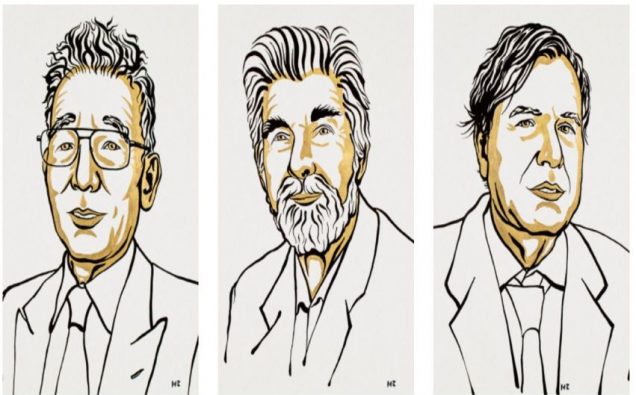
The significant number of immigrant Nobel Prize winners this year is another sign of America’s openness to new ideas and people and the role that immigrants play in the US. advancement.
A new study shows recent immigrants have played an outsized role in bringing honor and recognition to America in scientific fields. Immigrants are not only contributors to the US economy but also adding to its prestige as a place of inventions and discoveries.
In 2021, immigrants continued their winning streak of the Nobel Prize, the most celebrated of all awards, given to those whose efforts help improve the condition of humanity. Three of the four American winners of the 2021 Noble Prizes in Physics, medicine, and chemistry were immigrants to the United States.
“Immigrants have been awarded 38%, or 40 of 104, of the Nobel Prizes, won by Americans in chemistry, medicines, and physics since 2000,” according to a new analysis by the National Foundation for American Policy (NFAP).
“Between 1901 and 2021, immigrants have been awarded 35%, or 109 of 311, of the Nobel Prizes, won by Americans in chemistry, medicines, and physics.”
These three immigrants who earned the Nobel prize this year arrived in the United States through different paths. One came for work, another as an international student, and the third fled violence in the Middle East.
David W.C. MacMillan, born In Scotland and now a professor of chemistry at Princeton University, was awarded the Nobel Prize in chemistry. He came to the United States as an international student a earned a PhD. at the University of California-Irvine. MacMillan shared the award with Benjamin List, director of the Max Planck Institute for Coal Research in Germany.
Both are awarded for their development of a new tool to build molecules, work that has spurred advances in pharmaceutical research and lessened the impact of chemistry on the environment. their work, while unseen by consumers, is an essential part in many leading industries and is crucial for research.
Ardem Patapoutian, an immigrant from Lebanon, shared the 2021 Noble Prize in physiology or medicines, with David Julius, who was born in the United States. Dr. Patapoutian is a professor in the Dorris Neuroscience Center at Scripps Research in La Jolla, and Howard Hughes Medical Institute investigator. The two men received their prize for “groundbreaking research that solved a long-standing mystery of how the body senses touch and other mechanical stimuli.
Dr. Patapoutian, who is of American origin, grew up in Lebanon during the country’s long and calamitous civil war before fleeing to the United States with his brother in 1986 at age 18, Needing to establish residency in California so that he could afford college, he worked electric jobs for a year, delivering pizzas and writing for an American newspaper. At UCLA, in the course of preparing to apply to medical school, he joined a research laboratory so that the professor would write him a good recommendation.
The groundbreaking discoveries of the TRPV1, TRPM8, and Piezo channels by this year’s Noble Prize laureates have allowed us to understand how heat, cold and mechanical forces can initiate the nerve impulses that allow us to perceive and adapt to the world around us.
Syukuro Manabe, who received the 2021 Nobel Prize in physics is an immigrant to America from Japan in 1958 to take a job as a research meteorologist at the U.S. Weather Bureau. He is currently a senior meteorologist at Princeton University. Manabe demonstrated how increased levels of carbon dioxide in the atmosphere lead to increased temperatures at the surface of the earth. His work laid the foundation for the development of current climate models.
The achievements of immigrants in the form of Nobel Prizes, successful businesses, and contributions in other fields are a testament to the American Dream. Being open to immigration allows the US to reap benefits in the key areas of scientific and technological innovation.
Illustrations in the featured image show scientists including Syukuro Manabe, Klaus Hasselmann, and Giorgio Parisi
Illustrations courtesy Nobel Prize Organization Credit: Johan Jarnestad/The Royal Swedish Academy of Sciences”.


















